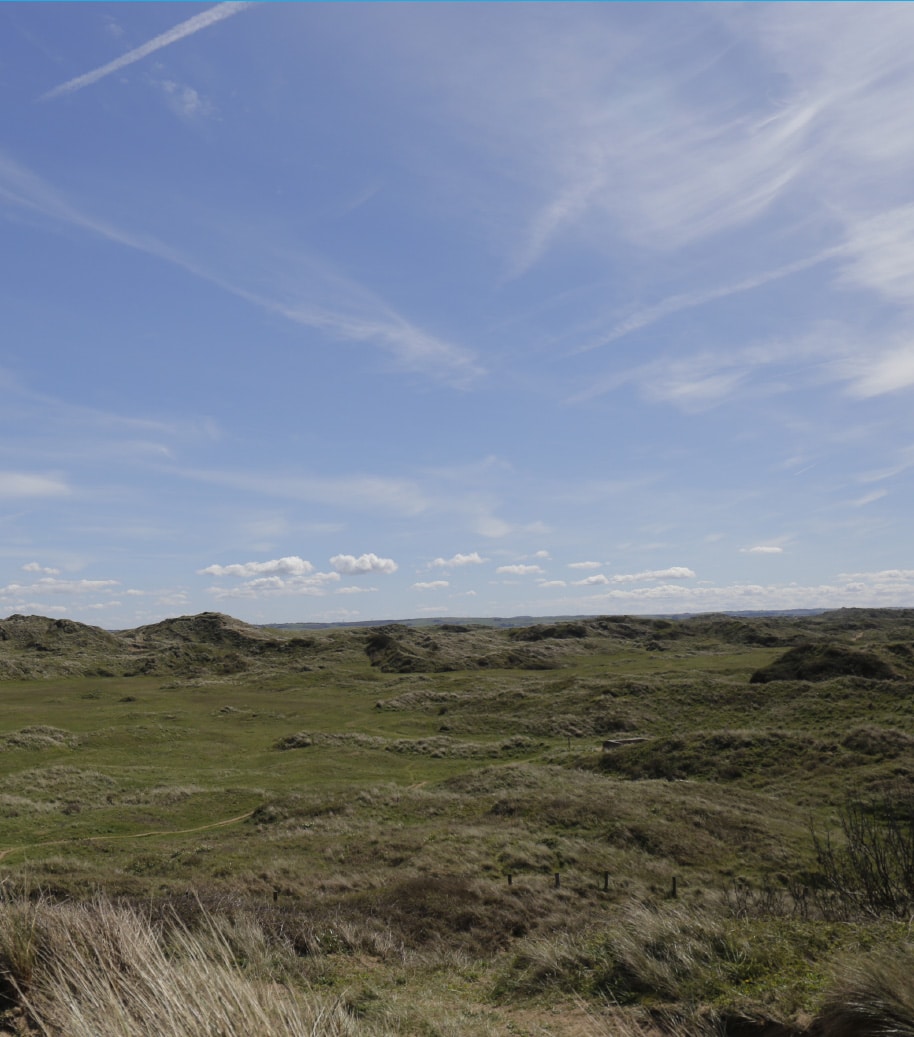The project team will work hard to ensure habitats, wildlife and the landscape are fully protected while we lay the underground power cable from Saunton Sands to the substation and East Yelland.
Extensive measures will be in place to protect the local environment, and we have taken specialist advice at each stage of the project to ensure these measures are robust.
On the most sensitive parts of the cable route, we will use special trenchless drilling techniques to leave habitats undisturbed.
There will be an Ecological Clerk of Works (an independent specialist) on site to make sure habitats and wildlife are appropriately protected. This person will have the power to stop work if they are concerned.
The cable route has been changed to avoid affecting the Braunton Burrows Special Area of Conservation.
Once fully operational, White Cross will deliver its calculated greenhouse gas emissions payback in just over three years.
To find out more on how the project’s greenhouse gas payback is equated: calculating carbon emitted through construction and associated activities, against the production of renewable energy once operational – read our Climate Change report (see page 58).
The project will achieve a 10% net gain in biodiversity – leaving the areas we work in richer with wildlife than before we started. To ensure we achieve that, we have conducted detailed surveys along the route to establish the baseline for species.
If we have to disturb any habitats during the work, we will restore them and in many cases enhance them. Once the work is finished, the cable will be safely buried underground and will have no impact on the local environment.
I heard that there are specific species that are under strict environmental protection at Saunton – how will you ensure these species are protected?
The project will take all necessary steps to protect the sensitive environment around Saunton and along the whole of the cable route. Independent ecologists have surveyed the land which will be impacted by our cabling work to make sure we understand the biodiversity and habitats in the area before we start work.
We are committed to achieve a 10% net gain in biodiversity following the completion of the work. This is required by the local planning authority and is expected to become legally binding during 2024.
Once we finish cabling work, further surveys will be carried out to assess how wildlife and habitats have been affected . We will use a specialist methodology which recognises the importance of different habitats to assess which are the most important or distinctive. This ensures that work we do to enhance to create habitats to compensate for any which have been affected will be done on a “like for like” or “like for better” basis.
In the most environmentally sensitive parts of the cable route we will be using trenchless drilling technology to ensure no wildlife or habitats are affected.
You can find out more about how we will protect the local environment here.
How will you monitor the impact the work has on the local environment?
We will have an Ecological Clerk of Works (an independent specialist) on site to make sure wildlife and habitats are protected. They have the power to stop works if they are concerned, and they are there to ensure that construction follows the environmental management plans agreed in advance.
Will the cables be visible?
Once we have laid the cables there will be very little to see between Saunton Sands and the East Yelland Substation. The cables will be below ground, like many other power cables.
You can find out more details about how we plan to protect the local environment during the onshore cable work following the link below.


